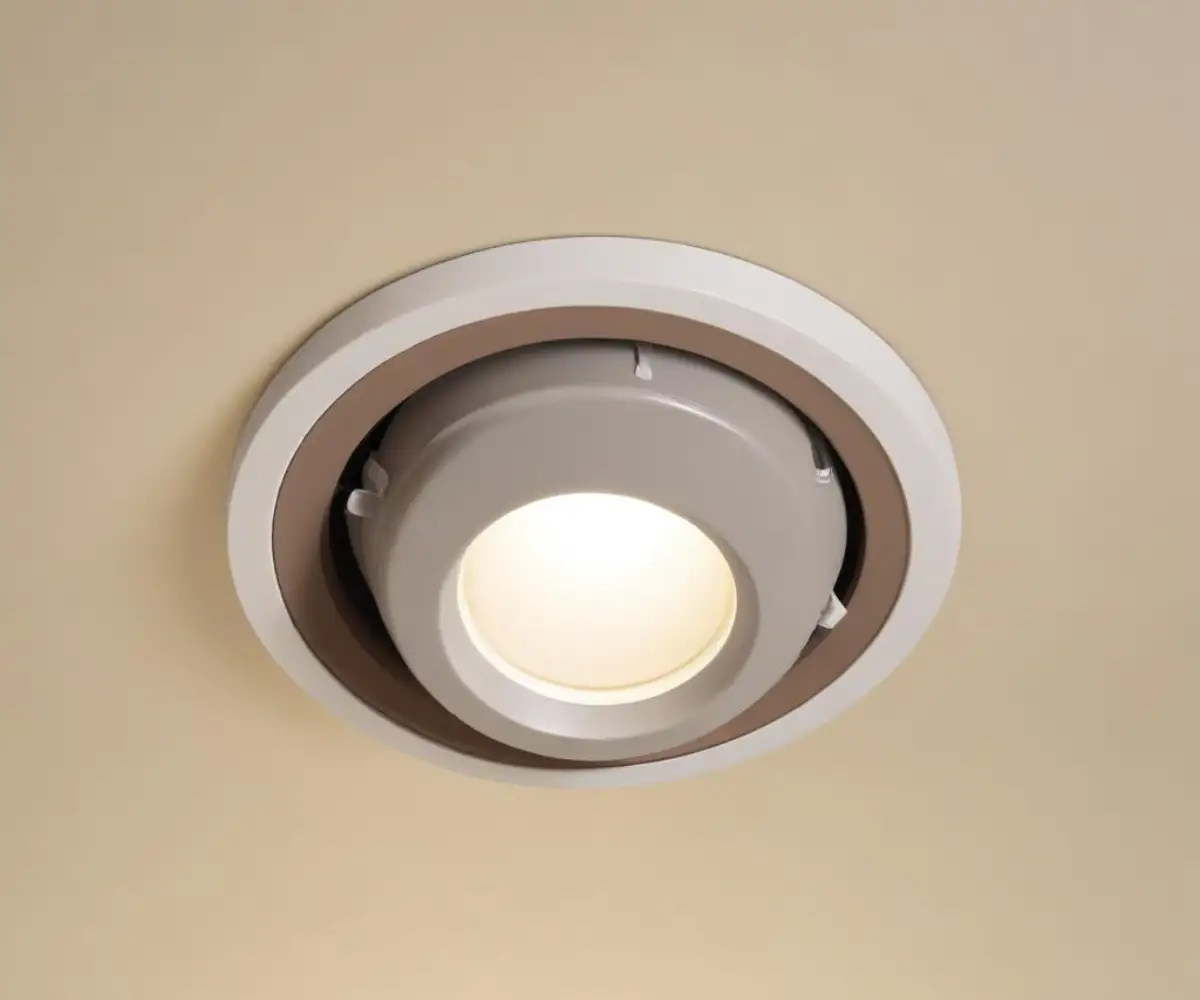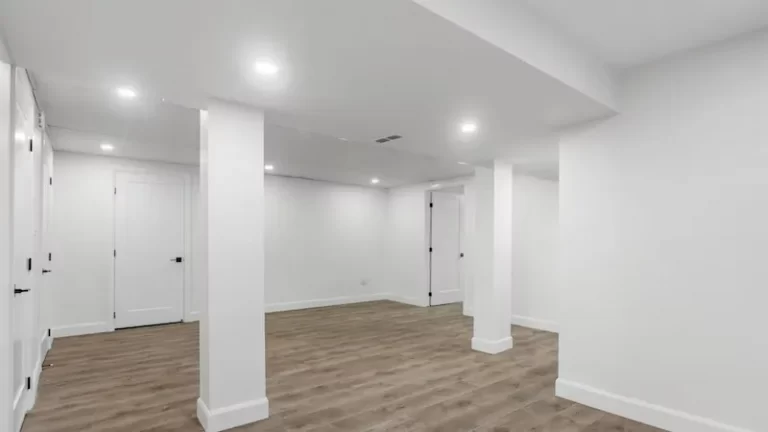4.5 Inch Recessed Light Retrofit: Your #1 Upgrade Guide
You glance up at your ceiling and sigh. Those old recessed lights, with their yellowish glow and dated-looking trim, just aren’t cutting it anymore. They make your rooms feel dim, they burn through expensive bulbs, and frankly, they’re an eyesore.
This is a common frustration for homeowners with 4.5-inch can lights. This unusual size can make finding a modern, efficient replacement feel like a hopeless search. You’re stuck in a lighting limbo, wanting a change but not knowing where to start.
You'll Learn About
Why Your Outdated 4.5″ Can Lights Are a Bigger Problem Than You Think
Those old fixtures are more than just an aesthetic issue; they are actively costing you money and comfort. The problem goes deeper than just an old-fashioned look. It’s about efficiency, safety, and the overall quality of your living space.
Many older 4.5-inch cans house incandescent or halogen bulbs that are incredibly inefficient. They convert most of their energy into heat, not light, which drives up your electricity bill and can even make rooms feel warmer. This constant energy waste is a silent drain on your finances.
The Endless Cycle of Bulb Replacement
Remember the last time you had to drag out a ladder to change a burnt-out recessed bulb? Incandescent bulbs have a notoriously short lifespan, often lasting only 1,000-2,000 hours. This means you’re replacing them far more often than you should have to, which is both inconvenient and costly over time.
Furthermore, the light quality from these old bulbs is often poor. They can cast a harsh, yellow light that distorts colors and fails to properly illuminate your space. A modern home deserves modern, high-quality lighting that makes every room feel bright and welcoming.
The Perfect Fix: A Simple 4.5-Inch LED Retrofit Kit
The solution is surprisingly simple and affordable: a 4.5-inch LED recessed light retrofit kit. This is an all-in-one unit that includes the LED light source and the trim, designed to fit directly into your existing 4.5-inch housing. It’s the single most effective way to solve all the problems of your old lighting in one go.
Upgrading to an LED retrofit kit provides an instant and dramatic improvement. You’ll enjoy massive energy savings, a lifespan that can exceed 50,000 hours, and vastly superior light quality. Best of all, it’s a project most homeowners can complete themselves in just a few minutes per light.
How to Choose the Perfect 4.5-Inch LED Retrofit Kit
Choosing the right kit is crucial for a successful upgrade. Because 4.5 inches is a non-standard size, paying close attention to the details is key. We’ll walk you through every step to ensure you buy the right product the first time.
Step 1: Get Your Measurements Right
Before you buy anything, you must measure the inside diameter of your existing recessed housing. Use a tape measure and check the opening from one inside edge to the other. It should be very close to 4.5 inches.
Don’t just eyeball it. An accurate measurement is the most important step to guarantee your new retrofit kit will fit perfectly inside the can.
Step 2: Identify Your Connector Type
Look inside the can where the light bulb screws in. You will likely see one of two connector types. The most common is the standard screw-in base, known as an E26 or Edison base.
Some newer (but still outdated) fixtures might use a two-pin connector, often a GU24 base. Most retrofit kits come with an E26 screw-in adapter, making them compatible with the vast majority of older housings. Just be sure to confirm before you purchase.

Step 3: Pick the Right Color Temperature for Your Space
LED lighting gives you control over the “color” of the white light, which is measured in Kelvins (K). This is a critical choice that affects the entire mood of a room. You are no longer stuck with that standard dingy yellow glow.
A lower Kelvin value means warmer, more yellow light, while a higher value produces cooler, bluer light. Warm White (2700K-3000K) is cozy and inviting, perfect for living rooms and bedrooms. Cool White (3500K-4000K) is more neutral and is great for kitchens, offices, and bathrooms where task clarity is important. Daylight (5000K+) is a crisp, almost blue light best used in garages or workspaces.
Step 4: Consider Lumens and Dimmer Compatibility
Lumens measure the brightness of the light. A typical 60-watt incandescent bulb produces about 800 lumens. An LED equivalent will produce the same 800 lumens while using only 8-10 watts of power.
If your lights are on a dimmer switch, you must choose a dimmable LED retrofit kit. It’s also critical to ensure your existing dimmer switch is compatible with LEDs. Older dimmers can cause new LED lights to flicker or buzz, so you may need to upgrade to a modern CL-style or LED+ dimmer for smooth performance.
Step 5: Select a Trim Style That Complements Your Decor
The trim is the visible ring you see on the ceiling. Retrofit kits come in various styles and colors to match your home’s aesthetic. A smooth trim offers a clean, contemporary look that sits flush with the ceiling.
A baffled trim has interior grooves designed to absorb excess light and reduce glare, which can be easier on the eyes. Both are excellent choices, and the decision often comes down to personal preference. You can also choose from colors like white, black, or brushed nickel to match your other fixtures.
| Feature | What to Look For | Pro Tip |
|---|---|---|
| Size | Must be specifically listed for 4.5-inch housings. | Measure your existing can’s inside diameter twice to be absolutely sure. |
| Connector | Most kits use an E26 screw-in adapter. | Take a picture of the inside of your can before you shop to confirm the socket type. |
| Color Temperature (K) | 2700K-3000K for living areas, 4000K+ for task areas. | Consider “Selectable White” kits that let you choose the color temperature with a switch on the unit. |
| Dimmability | The product must be explicitly labeled as “Dimmable”. | For best results, pair your new dimmable LEDs with an LED-rated dimmer switch. |
| Lumens (Brightness) | 600-900 lumens is a common range for general room lighting. | Higher ceilings or task areas may require higher lumen outputs for proper illumination. |
Your Step-by-Step Installation Guide: A 10-Minute DIY
One of the best things about these kits is how easy they are to install. You don’t need to be an electrician; you just need a few minutes and a ladder. This is a home improvement project with a huge payoff for a tiny amount of effort.
Modernizing your home’s built-in fixtures can have a massive impact. Just as you might look for creative ways to replace an old NuTone intercom, updating your lighting is a high-impact project that brings your home into the modern era.
Step 1: Safety First! Cut the Power
Go to your home’s circuit breaker box and turn off the power to the room where you’ll be working. Flick the light switch on and off to confirm the power is completely disconnected before you proceed.
Step 2: Remove the Old Bulb and Trim
Carefully unscrew the old light bulb. The old trim piece is likely held in by springs; gently pull it down and away from the ceiling. You may need to squeeze the springs on the side to release it from the housing.
Step 3: Install the New Socket Adapter
Your new retrofit kit will come with an adapter that looks like the base of a light bulb. Simply screw this E26 adapter into the existing light socket inside the housing, just as you would a regular bulb.
Step 4: Connect Your New LED Retrofit Kit
The retrofit kit has a wire with a connector on the end. Plug this connector into the matching wire from the E26 adapter you just installed. It should click securely into place.
Step 5: Secure the New Trim in Place
Your retrofit kit will have either torsion springs (V-shaped wires) or friction clips on the sides. Squeeze the springs together and guide them into the corresponding brackets inside the housing. Carefully push the entire unit up until the trim is snug and flush against the ceiling.
Ensuring the clips are properly set is key to a professional finish. It’s like any DIY project—using the right hardware matters, just as choosing the best screws for shelf brackets is vital for a secure installation.
Step 6: Restore Power and Test Your New Light
Go back to the breaker box and turn the power back on. Flip the light switch and admire your brand new, bright, and efficient LED light. The difference will be immediate and impressive.
Troubleshooting Common Issues
Installation is usually seamless, but occasionally you might run into a minor snag. Here’s how to handle the most common issues that can arise during your retrofit project.
What If My New Light Flickers?
Flickering is almost always caused by an incompatible dimmer switch. Older dimmers were not designed for the low power draw of LEDs. The solution is to replace the switch with a modern dimmer specifically rated for LED and CFL bulbs.
The Retrofit Kit Feels Loose in the Can
If the new trim isn’t perfectly flush with the ceiling, it’s because the springs or clips aren’t fully engaged. Pull the unit down and check that the torsion springs are seated correctly in their brackets. For friction clips, you can sometimes gently bend them outwards to create more tension for a tighter fit.
I Don’t Like the Color of the Light
This is why choosing the right Kelvin temperature beforehand is so important. If the light feels too “blue” or too “yellow” for your taste, your only option is to exchange it for a kit with a different color temperature. To avoid this, consider a kit with selectable color temperature, allowing you to try different options in your space.
Taking Your Lighting to the Next Level
Once you’ve mastered the basics of retrofitting your interior lights, you can apply these concepts to other areas of your home. Good lighting design creates a cohesive and functional environment both inside and out.
While these interior retrofits are a fantastic starting point, don’t overlook the impact of exterior illumination. Thoughtful outdoor lighting can dramatically improve safety and curb appeal, much like how homeowners upgrade their gable peak lighting to highlight architectural features.
Understanding Safety Ratings
When shopping, you may see terms like “IC-Rated” or “Wet-Rated.” An IC-Rated kit is approved for direct contact with ceiling insulation, which is a crucial safety feature. A Damp-Rated or Wet-Rated kit is necessary for areas with moisture, such as bathrooms, showers, or covered porches, as it is sealed to prevent water damage.
Upgrading your 4.5-inch recessed lights is one of the easiest and most rewarding DIY projects you can undertake. It saves you money, modernizes your home, and dramatically improves the quality of your light. Stop living with dim, dated, and inefficient lighting. It’s time to make the switch and see your home in a brilliant new light.

